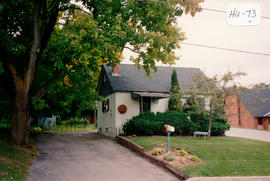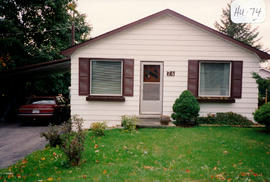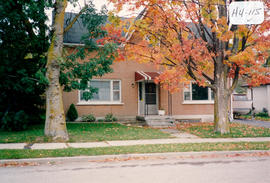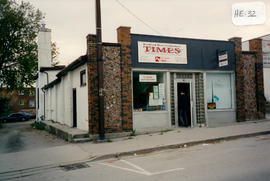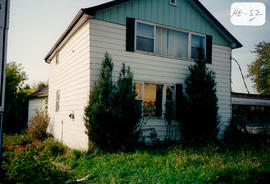- CA BWGPL GJ-HB-2017-03-22-04
- Item
- 1995
Part of George Jackson fonds
This mid-block building is located on a sloping lot at 112 Frederick Street. The structure, which was once the home of the Chantler family, was built on a sloping lot pre-1900 in the Ontario Vernacular Cottage style. The existing Frederick Street appears to be built at a higher level than the lot, indicating that this house was built before the street was paved or town services were installed.
The one-storey, three-bay cottage has a square plan with a centre hall. A box hall was typical for this style. It has a saltbox roof, a symmetrical façade, and a single door at the grade-level entrance. There are small window openings with low floor to ceiling heights and plain, wood trim and sills. Double-hung windows are not original. Wood frame construction is covered with vinyl siding. The original siding was likely wood. There is a parged, stone foundation. According to the 2000 inventory, few of the existing building elements appear to be original. It also notes that this modest cottage probably had few decorative details originally. (1, 2, 3)
George Jackson




